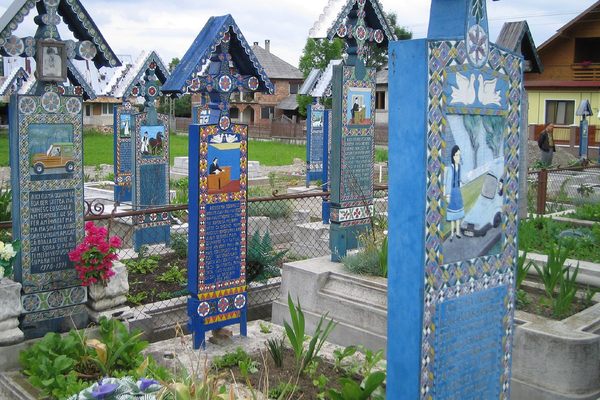100 Wonders: The Merry Cemetery
In the small Romanian town of Săpânţa, when you die, you can expect a colorful goodbye.
At the town’s Merry Cemetery, colorfully illustrated crosses depict soldiers being beheaded and resident being hit by a truck. And the epigraphs aren’t sugar-coated. “Underneath this heavy cross lies my mother in law poor,” reads one. “Try not to wake her up. For if she comes back home, she’ll bite my head off.”
The quirky graveyard is the creation of Stan Ioan Pătraş, who was born in Săpânţa in 1908, and, by 14, had already begun carving crosses for the local cemetery. By 1935, Patrash was carving clever or ironic poems—done in a rough local dialect—about the deceased, as well as painting the crosses with images depicting the ways in which the individuals died.
Pătraş soon developed a careful symbolism in his work. Green represented life, yellow was fertility, red was passion,and black was death. The colors were always set against a deep blue, known as Săpânţa blue, which Pătraş believed represented hope and freedom.
Pătraş single-handedly carved, wrote poems for, and painted well over 800 of these folk art masterpieces over a period of 40 years. He died in 1977, having carved his own cross and left his house and work to his most talented apprentice, Dumitru Pop. Pop has since spent the last three decades continuing the work, carving the cemetery’s crosses, and has turned the house into the Merry Cemetery’s workshop-museum.
Despite the darkly comedic, or merely dark, tones of the crosses, Pop says no one has ever complained about the work.






























Follow us on Twitter to get the latest on the world's hidden wonders.
Like us on Facebook to get the latest on the world's hidden wonders.
Follow us on Twitter Like us on Facebook